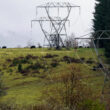The news that Oregon State University is founding a forestry research institute that is planned to focus heavily on the Willamette National Forest is both an opportunity and a challenge for Sweet Home.
As we report beginning on page 1 in today’s paper, the Institute for Working Forest Landscapes is a multi-faceted effort to develop new ways of managing forest resources in a collaborative way.
What that means is a lot of bright people are interested in figuring out new ways to get more out of the local forest without messing it up, and they realize that they need to work together with the local community to make that happen. That means the ball is, in a sense, in our court.
The institute is also a result of the realization, which has grown over the past couple of decades, that forestlands aren’t exclusively the habitat of trees, plants and wildlife. They also have significant and important connections to the human populations that live in and around them, and that recreate and work in them.
For too long, Oregon’s timber communities have been engulfed in a flood of do-goodism, driven that has wreaked economic and social havoc. The environmental movement, to be blunt, was born out of concerns over humans’ excesses in the natural world. For various reasons, some but not all of them careless, cruel or niggardly, over time mankind has damaged wildlife populations in many ways by slaughtering them or destroying the habitat necessary for their survival. This is not stewardship.
The result, of course, has been an over-reaction, fueled largely by radical environmental groups, who have used junk science and public furor to their advantage in the courts and elsewhere to lock down forests, seashores, farms and ranches, and other land and water, considered necessary for the survival of this species or that, to usage by humans. We say “junk science” because in the cauldron of public opinion, a shy owl or a marbled murrelet or an obscure breed of mouse can strike chords with the populace that hard facts often don’t.
Environmentalists accuse Big Business, government officials in league with industrialists, and others with nefarious motives of distorting science to their advantage, but we say it works both ways. Even today, no one really knows a whole lot about the spotted owl, its adaptability to habitats other than old growth forests or its inter-relationship with its nastier cousin, the barred owl, which scientists have recently discovered, isn’t too positive.
Millions of acres of national forest are growing to excess, thanks to courtroom decisions and consequent government policy such as the Northwest Forest Plan that, it is becoming increasingly evident, have created problems possibly more serious than the ones they were meant to solve. Giant forest fires are not good for wildlife or humans. They are certainly not the result of wise, responsible stewardship.
No one wants to see the salmon go away and sometimes corrective action is obviously necessary to preserve animal species. Many of us are delighted by the resurgent elk populations in Oregon, which followed restrictions that were prompted by market hunting and other excesses 100-plus years ago.
Despite the negative symbolism the spotted owl represents to many Sweet Home residents, we doubt that many of them really would take their shotguns and act on personal antipathy toward said owls simply because they don’t like them. It is the excess for which they are the figurehead that raises local ire, understandably. That’s why they’ve been on the “menu” in at least one local eatery.
Though politics and public opinion will always muddle the process of wise policy-making, having reliable facts in hand when making decisions is certainly preferable to what we’ve been doing over the past three decades.
That’s where the Institute for Working Forest Landscapes comes in. It won’t be a quick and easy fix, because there are none.
What the institute represents for Sweet Home is a commitment by OSU, the U.S. Forest Service and experts from other universities and agencies to find ways to bridge the gap between environmental extremism that results in foolish policy and industrial excess that creates other problems. Most of the answers won’t come quickly, but they may come from reliable scientific processes.
The forces behind the establishment of this research effort realize that the fall-out from recent forest management policies is not what anybody really wants – other than, perhaps, a small minority of radical environmentalists who really apparently prefer as little impact as possible from humans (other than themselves).
It’s pretty clear that we won’t go back to the glory days of the past, when, old-timers say, log trucks rolled through Sweet Home in an almost unbroken line, when state VIPs made it a point to show up at our Chamber of Commerce dinners and ride in our parades, when our schools were thriving and there were plenty of jobs that residents didn’t have to drive an hour each way to get to – unless it was into the forest.
But we have forests going to waste, due to bad policies that local forest managers have no control over. The tall trees that haven’t been thinned in 25 years may (or not) be helping a small owl population, but they’re not providing healthy habitat for other wildlife, such as deer and elk, and they aren’t doing a whole lot for humans either.
That’s what the institute is about: bridging that gap, figuring out ways to make the forests a healthy habitat for all the players, naturally and economically. And when they seek input from the local population on how to make the forests better, our local experts – loggers and woodsmen – should step up to help this enterprise be successful.




